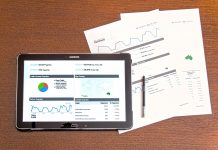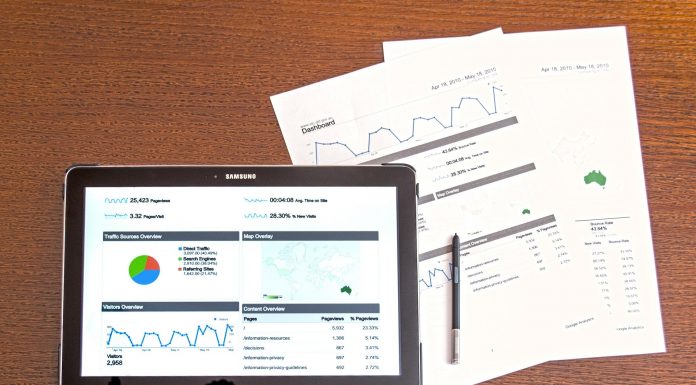The download site speed of e-commerce sites has really improved over the years because of the extensive availability of faster Internet service. But many users still struggle with making their sites run quickly. The unhappy truth is that users can design a user-friendly site, but if it takes time to load, clients will not likely shop there. By some accounts, even a 1-second delay can have a material impact on profit for online retailers.
In this blog, I will explain 10 ways to increase the speed of an e-commerce site:

1. Reduce Size of Page
The page size is measured in kilobytes. It consist all elements on a page — images, CSS, JavaScript. The smaller the page size, the better. Avoid inserting big objects or images on a page; build your pages by keeping load times in mind. Page size can be measured easily by saving the page on your laptop or computer as a web archive folder from the browser. Then measure the size of the folder.
Try to keep page load times to 3 seconds or less, unless your e-commerce site needs richer graphics to make revenue. In that example, find the right balance between losing shoppers due to slow load times versus gaining clients due to excellent graphics.
2. Use a Content Delivery Network
If you have clients around the world, consider a content delivery network. It caches the content on servers located in different parts of the world, which reduces load times. This would help, say, a customer in Hong Kong, who could load a page from a server in China, versus hitting the master server in U.S.
3. Use Caching and In-memory Technology
Using caching or in-memory technologies to evade accessing a database unnecessarily. These technologies can temporarily store in memory a full e-commerce product catalog, all client information, site-search indexes, and other information, which would avoid calls on the database.
The technology uses the RAM available on a server and stores data in it. Since input-output operations are typically 10 times faster on RAM than a hard disk, this aids increase performance.

4. Compress Data
Use Gzip or other compression software to lessen the size of the data sent to a browser. The compression is done on the server side, before returning data based on the customer demand. This needs changing server configuration files, which takes developer knowledge. Before enabling data compression, however, make sure your shoppers do not use older browsers, such as Internet Explorer 4, as Gzip is not well-matched.
5. Specify Image Dimensions
Specify width and height for images so that the browser can create placeholders for the images, to load the page and the images at the same time. Users often create an image without specifying the dimensions of the image on the page. This forces the browser to load the image completely before it can start another task, which takes more time.
Simple width and height attributes for each image makes the browser understand the size of the image and it can make room for the image while also loading other parts of the page. Additionally, automatically alter image sizes for different types of devices – tablet, laptop or smartphone.

6. Optimize Platform Configuration
If you use an ecommerce platform — licensed or hosted— determine available configurations to improve page load times. Most platforms offer minor tweaks that can lead to major gains. For instance, the default configuration that comes with Magento supports file compression, a content delivery network, and other speed enhancements. A retailer’s Magento user can make these platform optimizations.
7. Use Fewer ‘Round Trips’
Lessen the number of “round trips” to the server by combining multiple files. For instance, instead of accessing multiple JavaScript files differently, first combine them into one file and then access the server. This forces the browser to make one request versus making multiple trips, which will lessen load times.
There are different tools and techniques available to help with this, such as CSS Sprites, which enables the loading of different images in one request.
8. Monitor Site Speed
Check the speed of your e-commerce site sometimes to proactively solve issues. If a page is taking too much than 3 seconds to load, it likely needs improving. There are many tools to diagnose and measure site speed. These include Pingdom, Google’s PageSpeed and Yahoo’s YSlow Insights.
The examples below show the speed score of foremost e-commerce sites using Google’s PageSpeed Insights from a computer or laptop. A score of 85 and higher means that the site is working well. Only Ebay appears to meet this threshold, though, with Overstock and Amazon close behind.
- Amazon.com: 83/100
- Ebay.com: 86/100
- Staples.com: 54/100
- Walmart.com: 37/100
- Target.com: 69/100
- Zulily.com: 72/100
E-commerce website are best for brand growth
9. Avoid Redirects
Decrease redirects on your site if you have to use them. Each redirect is a different request to the server that increases load times. Frequently, retailers continue to maintain redirects from old links to the new ones. These redirects should be removed when most clients have started accessing the new URLs directly.

10. Use Fast Hosting Servers
Size your hosting server — i.e., RAM, hard drive storage, CPU speed — to fulfill your traffic requirements. This challenge is generally seen with retailers that have grown, but still use a smaller server (or shared servers).
Ask your hosting service provider to size the server based on maximum user load, probable traffic growth in the next year, and memory requirements. Then set up email alerts if the clear thresholds — such as peak traffic loads — are exceeded. This will tell you to resize your server.
For more information reach out to us directly at contact@callousweb.com
If you liked this article please share it on social media





























